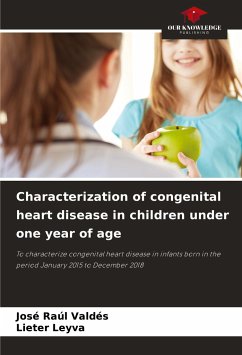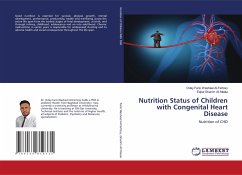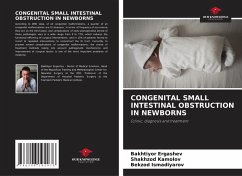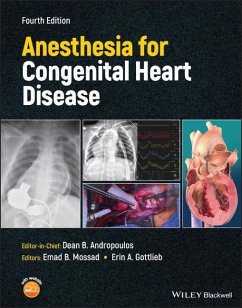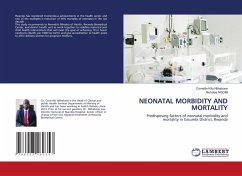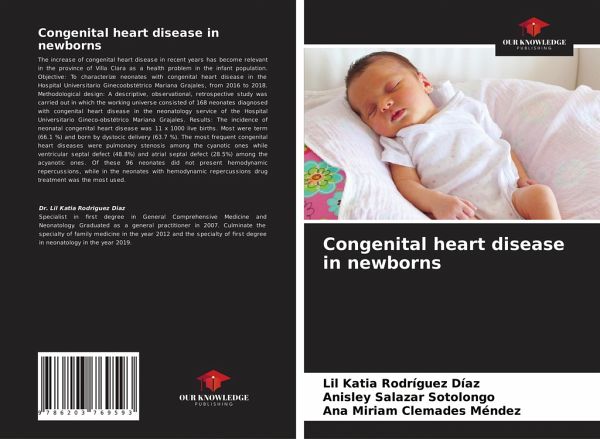
Congenital heart disease in newborns
Versandkostenfrei!
Versandfertig in 6-10 Tagen
27,99 €
inkl. MwSt.

PAYBACK Punkte
14 °P sammeln!
The increase of congenital heart disease in recent years has become relevant in the province of Villa Clara as a health problem in the infant population. Objective: To characterize neonates with congenital heart disease in the Hospital Universitario Ginecoobstétrico Mariana Grajales, from 2016 to 2018. Methodological design: A descriptive, observational, retrospective study was carried out in which the working universe consisted of 168 neonates diagnosed with congenital heart disease in the neonatology service of the Hospital Universitario Gineco-obstétrico Mariana Grajales. Results: The inc...
The increase of congenital heart disease in recent years has become relevant in the province of Villa Clara as a health problem in the infant population. Objective: To characterize neonates with congenital heart disease in the Hospital Universitario Ginecoobstétrico Mariana Grajales, from 2016 to 2018. Methodological design: A descriptive, observational, retrospective study was carried out in which the working universe consisted of 168 neonates diagnosed with congenital heart disease in the neonatology service of the Hospital Universitario Gineco-obstétrico Mariana Grajales. Results: The incidence of neonatal congenital heart disease was 11 x 1000 live births. Most were term (66.1 %) and born by dystocic delivery (63.7 %). The most frequent congenital heart diseases were pulmonary stenosis among the cyanotic ones while ventricular septal defect (48.8%) and atrial septal defect (28.5%) among the acyanotic ones. Of these 96 neonates did not present hemodynamic repercussions, while in the neonates with hemodynamic repercussions drug treatment was the most used.




